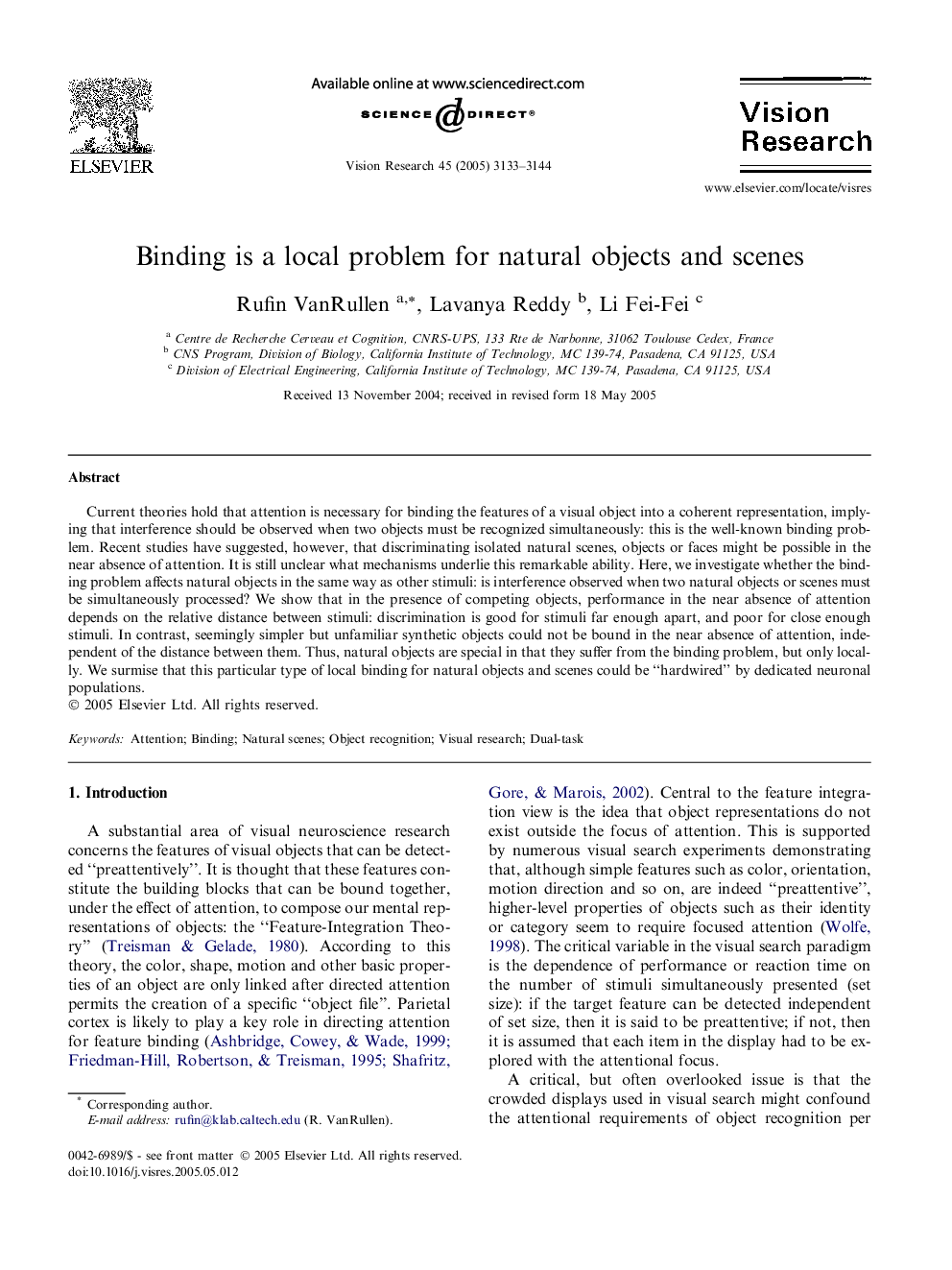| Article ID | Journal | Published Year | Pages | File Type |
|---|---|---|---|---|
| 4035942 | Vision Research | 2005 | 12 Pages |
Current theories hold that attention is necessary for binding the features of a visual object into a coherent representation, implying that interference should be observed when two objects must be recognized simultaneously: this is the well-known binding problem. Recent studies have suggested, however, that discriminating isolated natural scenes, objects or faces might be possible in the near absence of attention. It is still unclear what mechanisms underlie this remarkable ability. Here, we investigate whether the binding problem affects natural objects in the same way as other stimuli: is interference observed when two natural objects or scenes must be simultaneously processed? We show that in the presence of competing objects, performance in the near absence of attention depends on the relative distance between stimuli: discrimination is good for stimuli far enough apart, and poor for close enough stimuli. In contrast, seemingly simpler but unfamiliar synthetic objects could not be bound in the near absence of attention, independent of the distance between them. Thus, natural objects are special in that they suffer from the binding problem, but only locally. We surmise that this particular type of local binding for natural objects and scenes could be “hardwired” by dedicated neuronal populations.
